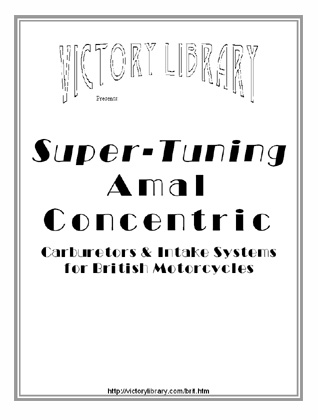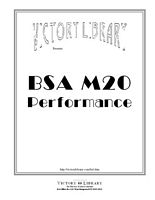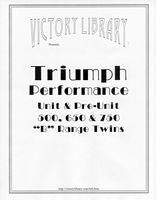|
|
 |
Performance cams
for the Toyota 3MZ-FE V6 engine
|
Here I will make various observations and comments on how the 3MZ-FE engine, transmission &c. function, and in some cases how to make improvements. New material will be added regularly, and eventually better organized. Click below to jump directly to an individual topic. |
Original cams
The VVTi cam timing is varied by rotating only the intake cam 60° by adjusting the relationship between the camshaft drive belt and the intake camshaft. It’s done by applying oil pressure to an actuator to adjust the camshaft position. This does not change the intake duration, but does change the overlap, dynamic compression ratio and cylinder pressure as engine speed changes.
VVTi does not switch between 2 modes at a fixed engine speed or throttle opening, but instead provides infinitely variable valve timing (within the 60° range) by continuously monitoring engine conditions including RPM, throttle position, accelerator pedal angle, engine coolant temperature, intake air volume and intake air temperature and optimizing cam timing accordingly.
At idle, VVTi is in Mode 1 (the default position), reducing cranking effort and increases cranking speed for faster starts by keeping the intake valve open later (64° ABDC), which reduces cranking compression. Overlap is minimized (0°) to prevent exhaust gas recirculation into the combustion chamber and help emissions.
3MZ VVTi cam timing: Mode 1 |
Intake opens | 4° ATDC | Exhaust opens | 56° BBDC |
Intake closes | 64° ABDC |
Exhaust closes | 4° ATDC |
Intake duration | 240° |
Exhaust duration | 240° |
Intake lobe centerline | 124° |
Exhaust lobe centerline | 116° |
Overlap | 0° |
Lobe separation angle | 120° |
At full power, wide open throttle and high RPM VVTi is in Mode 2 (sports performance), increasing overlap by 60° for improved breathing and advancing the intake cam, which closes the intake valves earlier. Normally this would reduce peak power, but the design relies on intake charge inertia and intake system resonance to provide high efficiency.
3MZ VVTi cam timing: Mode 2 |
Intake opens | 56° BTDC | Exhaust opens | 56° BBDC |
Intake closes | 4° ABDC |
Exhaust closes | 4° ATDC |
Intake duration | 240° |
Exhaust duration | 240° |
Intake lobe centerline | 64° |
Exhaust lobe centerline | 116° |
Overlap | 60° |
Lobe separation angle | 90° |
On closing throttle or engine shut-down, VVTi reverts to Mode 1 to reduce cylinder pressure to reduce compression loss. Click here to compare 1MZ, 1MZ VVT and 3MZ VVTi cam timing:  .
Tappets (valve lifters) are the “inverted bucket” type which ride directly on the cam lobes (there are no rocker arms, the lobe height equals the gross lift), similar to that used on DOHC engines for many decades including the Jaguar 3.8 and many modern motorcycle engines. The tappet fits over the valve and spring. .
Tappets (valve lifters) are the “inverted bucket” type which ride directly on the cam lobes (there are no rocker arms, the lobe height equals the gross lift), similar to that used on DOHC engines for many decades including the Jaguar 3.8 and many modern motorcycle engines. The tappet fits over the valve and spring. |
Modified cams
Although the VVTi cam mechanism provides nice features for the 3MZ, the exact cam events (opening and closing points of the valves), as well as the timing and amount of re-positioning, are not optimal for improved peak power derived at higher RPM from engine modifications such as porting, tuned exhaust, &c.
Lexus owners with VVTi have modified the travel of the mechanism by adding adjusting screws to change the timing. The experiments that I’ve read about only reduced the range of intake cam rotation (from 60° to something less), but this could also be used to expand the range (from 60° to something more), and/or move the range up or down without changing the other mechanical components, or modifying the electronics. This method cannot change the actual intake or exhaust duration or valve lift, merely re-arrange their relative positions. This is a zero-sum modification: you can’t get something for nothing; low-speed smoothness and response will decay, gas mileage will go down, the engine will develop flat spots that must be “tuned out”, it won’t be “plug-n-play”.
Here’s an example of alternate cam timing for increased peak power at higher RPM by changing the intake valve opening and closing points, and reducing the range of rotation to 50°. These supporting engine modifications are present: porting adds flow during overlap so the actual event in degrees can be reduced, and higher RPM allows flow to enter after BDC. Mode 1 remains unchanged.
3MZ modified VVTi cam timing: Mode 2a |
Intake opens | 46° BTDC | Exhaust opens | 56° BBDC |
Intake closes | 14° ABDC |
Exhaust closes | 4° ATDC |
Intake duration | 240° |
Exhaust duration | 240° |
Intake lobe centerline | 74° |
Exhaust lobe centerline | 116° |
Overlap | 50° |
Lobe separation angle | 95° |
The cams (either the intake, the exhaust or both) can be reground and hardwelded by Web Cam (among others) to increase duration (the time in degrees and seconds that a valve is open) and/or lift (the hight of the valve when fully open). There are no specific recommendations listed, but a grind used successfully in a DOHC engine with 4 valves per cylinder, “bucket” tappets, and a combustion chamber design with a shallow valve angle of any brand (rather than from another Toyota of different design with a single cam, “G” type with a high valve angle, 2 valves per cylinder, &c.), and similar bore and stroke is suitable for examination.
It’s extremely important that the tappet diameter of the donor engine be the same diameter (31mm nominal) as, or very slightly smaller than the 3MZ. This is because the maximum velocity is effectively a function of the tappet’s contact surface length with the cam lobe - a longer surface (viz., larger diameter) permits more aggressive rates. This rules out use of most DOHC motorcycle cams which have larger tappets (33 & 35mm are common). It may be possible to bore the tappet opening in the head out to a larger size to accept a non-stock tappet, but this is fraught with peril and suitable for experienced engine designers only.
The Toyota 4A-FE 4 cylinder engine (although smaller in displacement per cylinder at 81mm bore × 77mm stroke for 1,587cc) has a similar head and combustion chamber design. I don’t know if the tappet size is compatible. Click here for the Web Cam web site and call them for a suggestion:  .
I don’t know if the earlier MZ cams can be directly interchanged, but if so they offer some alternate choices of cam timing, especially since DOHC design permits either the intake, the exhaust or both cams can be replaced, and the relationship between them (the lobe separation angle) adjusted. .
I don’t know if the earlier MZ cams can be directly interchanged, but if so they offer some alternate choices of cam timing, especially since DOHC design permits either the intake, the exhaust or both cams can be replaced, and the relationship between them (the lobe separation angle) adjusted. |
1MZ (fixed) cam timing |
Intake opens | 4° BTDC | Exhaust opens | 46° BBDC |
Intake closes | 44° ABDC |
Exhaust closes | 2° ATDC |
Intake duration | 228° |
Exhaust duration | 228° |
Intake lobe centerline | 110° ATDC |
Exhaust lobe centerline | 112° BTDC |
Overlap | 6° |
Lobe separation angle | 111° |
1MZ VVTi cam timing: Mode 1 |
Intake opens | 4° ATDC | Exhaust opens | 54° BBDC |
Intake closes | 60° ABDC |
Exhaust closes | 2° ATDC |
Intake duration | 236° |
Exhaust duration | 236° |
Intake lobe centerline | 122° ATDC |
Exhaust lobe centerline | 116° BTDC |
Overlap | -2° |
Lobe separation angle | 119° |
1MZ VVTi cam timing: Mode 2 |
Intake opens | 56° BTDC | Exhaust opens | 54° BBDC |
Intake closes | 0° TDC |
Exhaust closes | 2° ATDC |
Intake duration | 236° |
Exhaust duration | 236° |
Intake lobe centerline | 62° ATDC |
Exhaust lobe centerline | 116° BTDC |
Overlap | 58° |
Lobe separation angle | 89° |
Substitution of a 1MZ head with its fixed cam timing (requiring minor mods to the block) may provide a useful alternate.
Here’s a 1MZ intake cam and a 3MZ exhaust cam installed in their normal positions.
1MZ intake + 3MZ exhaust cam timing |
Intake opens | 4° BTDC | Exhaust opens | 56° BBDC |
Intake closes | 44° ABDC |
Exhaust closes | 4° ATDC |
Intake duration | 228° |
Exhaust duration | 240° |
Intake lobe centerline | 110° ATDC |
Exhaust lobe centerline | 116° BTDC |
Overlap | 8° |
Lobe separation angle | 113° |
Read more about cam design for supercharged engines:
 |

See these Victory Library booklets |

| 
| 
| 
| 
| 
| 
| 
| 
|

| 
|

|

|

|
GMC, supercharger, blower, 6-71, 671, 8-71, 871, pressure, adapt, convert, manifold
|




